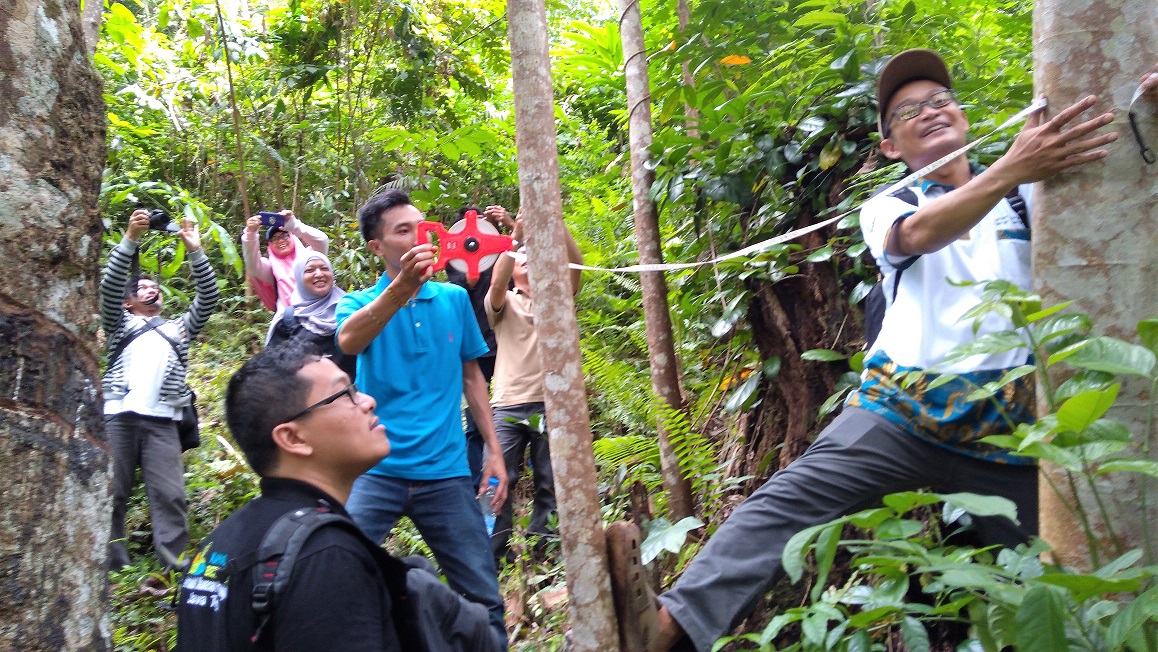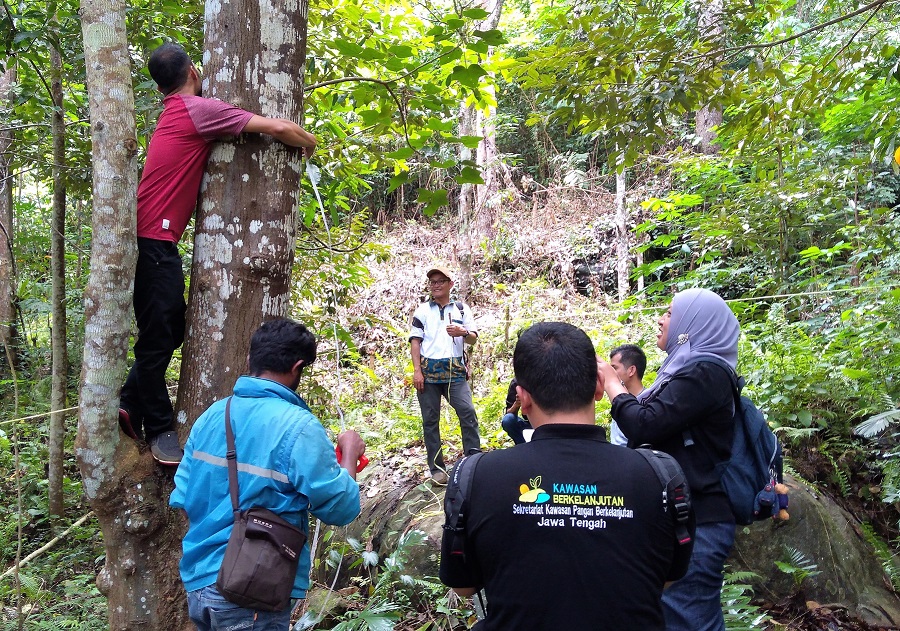YSNI values the importance of measuring its contribution to the climate agenda in general and carbon emission reduction specifically.
For a greater understanding of these complex issues, YSNI and its local partners, Keling Kumang Group and Business Watch Indonesia, participated in the training. There were 10 participants in total, three experts from LAPAN-KLHK and two technical instructors from LAPAN-KLHK.
Kulbir Mehta, the country manager of Yayasan Solidaridad Network Indonesia and Bapak Dedi Irawadi, the head of Remote Sensing Data & Technology Center at LAPAN, officially opened the programme. The first day of the training provided an introduction to remote sensing data and carbon accounting concepts and systems. Dedi Irawadi informed the participants about data acquisition, processing and management system used by LAPAN.
This was followed by a session by Bapak Kustio on the basic concepts of remote sensing and how to choose the correct type of remote sensing data for Solidaridad programme project needs. Bapak Judin Purwanto, carbon accounting expert of KLHK explained the current Indonesian National Carbon Accounting System (INCAS) and land-based carbon accounting concept based on the Intergovernmental Panel on Climate Change (IPCC) guidance in 2006. He further elaborated on the 23 types of land use currently being applied in the carbon accounting system of KLHK.
Pieter Sijbrandij presenting a memento to Bapak Dedi Irawadi
The second day of training started with the continuation of lectures from Bapak Judin and Bapak Kustiyo on carbon accounting and remote sensing data for land use-land cover (LULC) interpretation, especially relating to the provision of activity data (spatial data) and emission factor data (tabular data).
Activity data deliberations were about human activities that emit greenhouse gas, and more specifically on land use, land use change and forestry. Emission factor data discussions focused on emissions being released into the air from each specific type of land use if converted.
The sessions continued into the third day on the methodology to assess remote sensing data from the LAPAN management system. Land satellite users can download the data from the LAPAN website for free. Participants were taught on how to use ArcGIS for LULC interpretation and carbon accounting.


Participants measuring carbon stock
On day four, to provide a better understanding of LULC interpretation and how to acquire the emission factor data, participants were taken to Mount Pasi for a field survey. Participants received an explanation about the methods for carrying out measurement and estimation of carbon stock and carbon reserve on various ground sample plots (eg. 20 m x 20 m, 10 m x 10 m, 5 m x 5 m and 2 m x 2 m). The field survey equipped the participants to make manual measurements and estimate carbon stock.
Session in progress
On the last day, participants were taught to analyze carbon accounting map layouts using ArcGIS. This training will make a crucial contribution to the climate change agenda in Indonesia and in other countries. It also serves as an essential capacity building activity within YSNI and for its partners.
YSNI thanks LAPAN and the Indonesia Ministry of Environment and Forestry.
Learn more about Solidaridad programmes in South & South-East Asia
